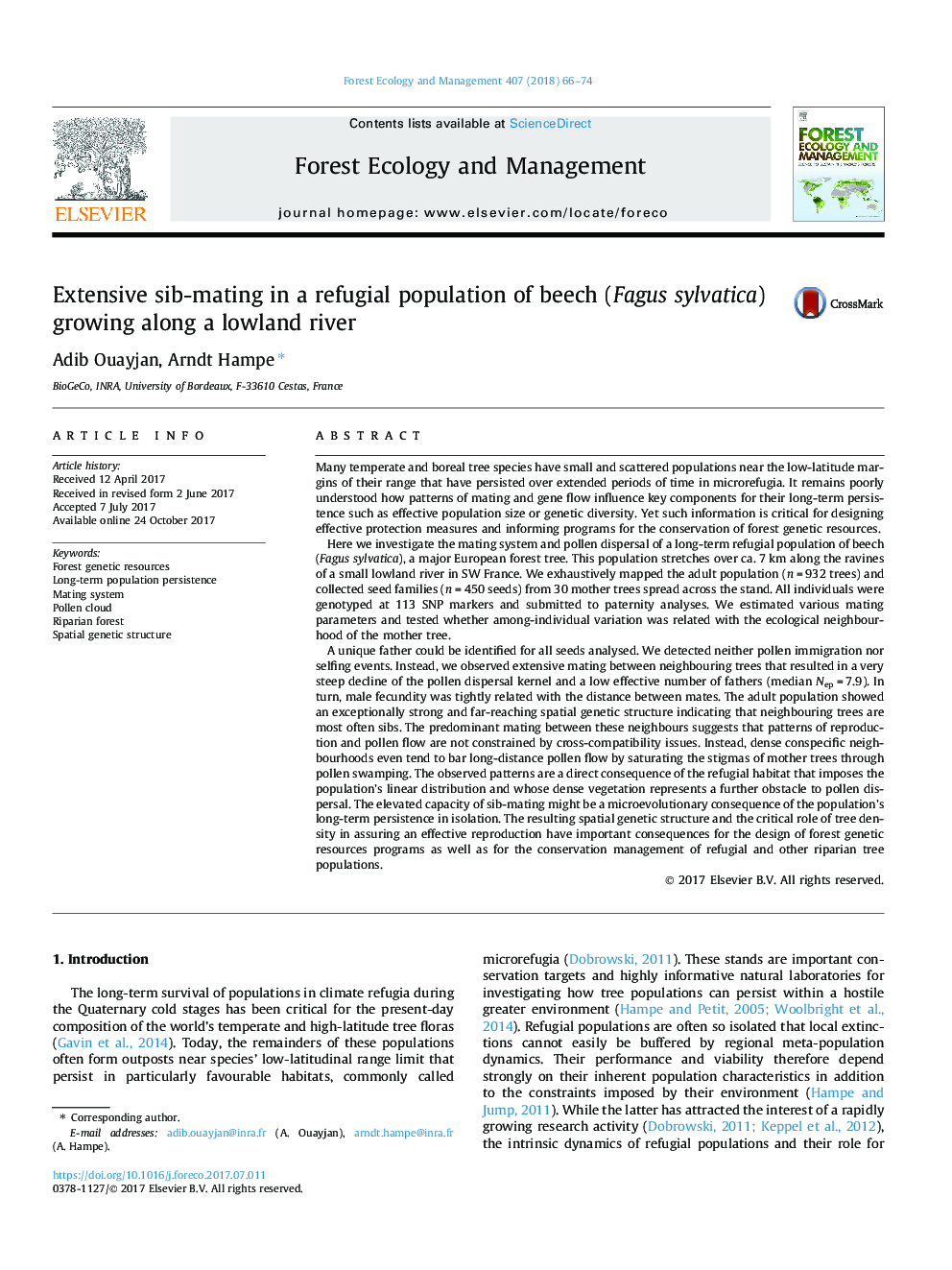| Article ID | Journal | Published Year | Pages | File Type |
|---|---|---|---|---|
| 6541969 | Forest Ecology and Management | 2018 | 9 Pages |
Abstract
A unique father could be identified for all seeds analysed. We detected neither pollen immigration nor selfing events. Instead, we observed extensive mating between neighbouring trees that resulted in a very steep decline of the pollen dispersal kernel and a low effective number of fathers (median Nep = 7.9). In turn, male fecundity was tightly related with the distance between mates. The adult population showed an exceptionally strong and far-reaching spatial genetic structure indicating that neighbouring trees are most often sibs. The predominant mating between these neighbours suggests that patterns of reproduction and pollen flow are not constrained by cross-compatibility issues. Instead, dense conspecific neighbourhoods even tend to bar long-distance pollen flow by saturating the stigmas of mother trees through pollen swamping. The observed patterns are a direct consequence of the refugial habitat that imposes the population's linear distribution and whose dense vegetation represents a further obstacle to pollen dispersal. The elevated capacity of sib-mating might be a microevolutionary consequence of the population's long-term persistence in isolation. The resulting spatial genetic structure and the critical role of tree density in assuring an effective reproduction have important consequences for the design of forest genetic resources programs as well as for the conservation management of refugial and other riparian tree populations.
Related Topics
Life Sciences
Agricultural and Biological Sciences
Ecology, Evolution, Behavior and Systematics
Authors
Adib Ouayjan, Arndt Hampe,
